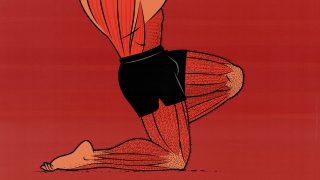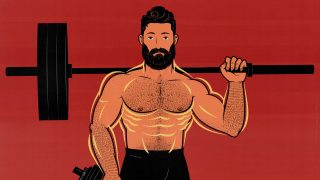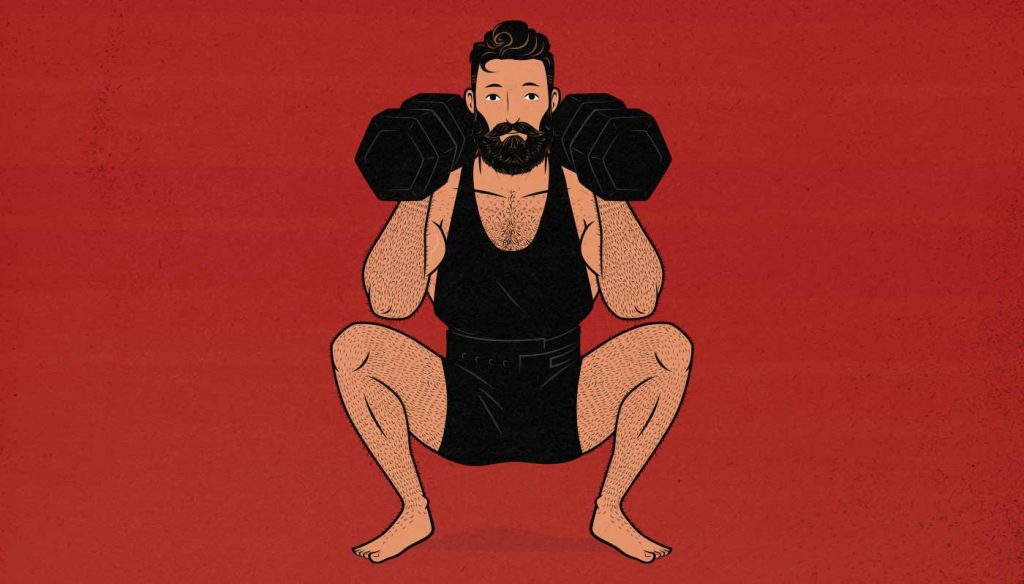
Are Dumbbells or Barbells Better for Building Muscle?
Both barbells and dumbbells are great for gaining size and strength. However, they aren’t quite the same thing. Each of them has their own strengths and weaknesses.
For example, the barbell bench press is the most famous lift for building up our chests, and with good reason—it’s the heaviest, and it does the best job of building our triceps and shoulders alongside our pecs. But if we’re trying to build a stubborn chest, or if we have cranky shoulders, the dumbbell bench press might be a better choice. Why is that?
Or what about when we’re doing biceps curls or overhead presses? Should we grab a barbell or some dumbbells? The barbell allows us to lift heavier, which forces our cores to work harder and our spines to grow tougher, but dumbbells allow us to lift with a freer range of motion, and they engage different stabilizer muscles.
And why are barbells so popular in strength training while dumbbells are more popular with bodybuilders? Is it because barbells are better for gaining strength in our lower bodies whereas dumbbells are better for building bigger and more symmetrical muscles?
It also helps to know the pros and cons of barbells and dumbbells so that we can decide what type of home gym we want to build. Should we build a barbell home gym in a spare room or should we get a pair of adjustable dumbbells that we can store in the closet? If we want the best results, do we need access to both?
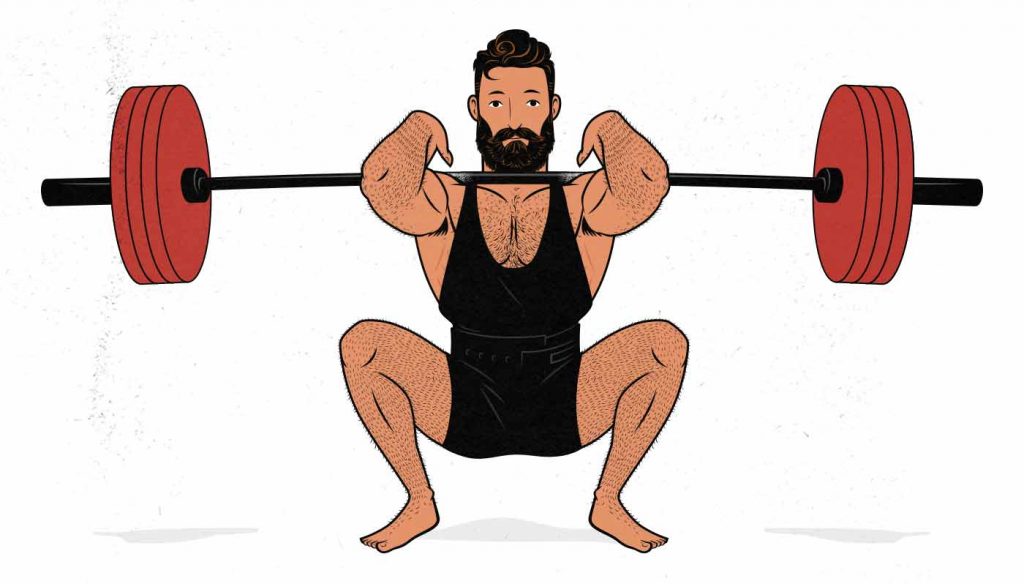
The Advantages of All Free Weights
Commercial gyms have a wide variety of lifting equipment, allowing us to choose between barbells, dumbbells, curl-bars, cables, or exercise machines. That can make this seem more confusing than it really is. Barbells and dumbbells are usually the best default, but exercise machines can be great, too, and even bodyweight training can work.
Whichever tools we have access to, the research clearly shows that the majority of our muscle growth will come from doing the big compound lifts:
These big compound lifts are so effective because they engage the most muscle mass. For example, a leg press works just our legs, whereas a front squat works our quads, glutes, and upper backs. Plus, front squats do a better job of toughening up our bones and improving our posture.
Plus, because the big compound lifts train entire movement patterns under heavy loads, we develop strength in all of our prime movers as well as our stabilizer muscles. We also learn how to perform the movements with better coordination. As a result, research by Schwanbeck et al shows that strength transfers quite well, regardless of whether we build that strength with the barbell bench press, dumbbell bench press, or machine bench press.
That isn’t to say that we should only use the big compound lifts, just to say that we should build our training around them. We can still build muscle with smaller lifts, but our workouts start to become less efficient and it starts to become harder to reap all the general health benefits. Ideally, we’d do these big lifts with barbells and dumbbells, but exercise machines can work well, too.

For example, when it comes to building a bigger and stronger chest, the most popular lift is the barbell bench press, and with good reason—it’s a great lift. But the dumbbell bench press has just as many advantages, as do push-ups. As the hypertrophy researcher, Dr Brad Schoenfeld, says, “Load is load.” However, just because they’re all equally good at building muscle doesn’t mean that they’re all the same. Push-ups are lighter, more painful, and harder to progress, but they do a great job of bulking up our abs and serratus anterior muscles:
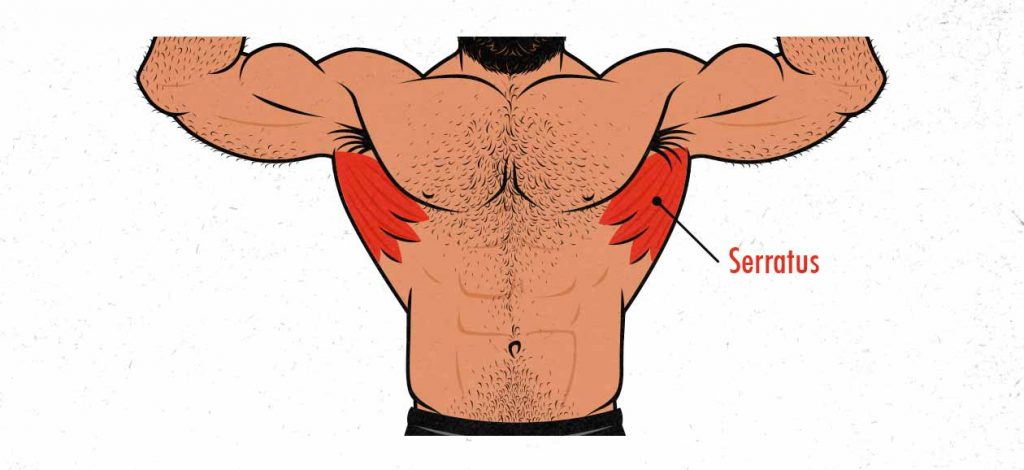
The dumbbell bench press takes our abs and serratus out of the mix but allows us to load our chest quite a bit heavier. Plus, because the dumbbells can fall away to the sides, our chests need to put in extra work to squeeze them together, making the dumbbell bench press the best bench press variation for guys with stubborn pecs. It’s also a great lift for guys with cranky shoulders because our hands can rotate freely as we lift.
The barbell bench press removes that extra stimulation for our chests and the range of motion is a bit smaller, but it allows us to lift quite a bit heavier, putting more load on our shoulders and triceps. That makes it a very efficient lift at stimulating growth in several different muscles at once. Furthermore, because the barbell bench press is so stable, we can lift in lower rep ranges.
The machine press removes much of the work from our stabilizer muscles, since the bar is moving along a fixed path, but we still need to use our chests, shoulders, and triceps to push the weight forward, and so the machine press stimulates a similar amount of muscle growth to the barbell and dumbbell bench press.
Load is load, and we can build muscle with almost anything. Free weights generally make for a better choice on the big compound lifts, since it’s usually to engage more overall muscle mass. And even with free weights, although barbells and dumbbells are similarly effective for bulking up, they each still have pros and cons.
The Advantages of Barbells
So, first of all, for powerlifting, barbells are obviously better. It’s impossible to do back squats, barbell bench presses, and conventional deadlifts with dumbbells. Even if you’re just interested in building impressive squat and deadlift numbers, though, that’s a reason to favour a barbell. You’ll never be squatting or deadlifting as heavy with dumbbells.
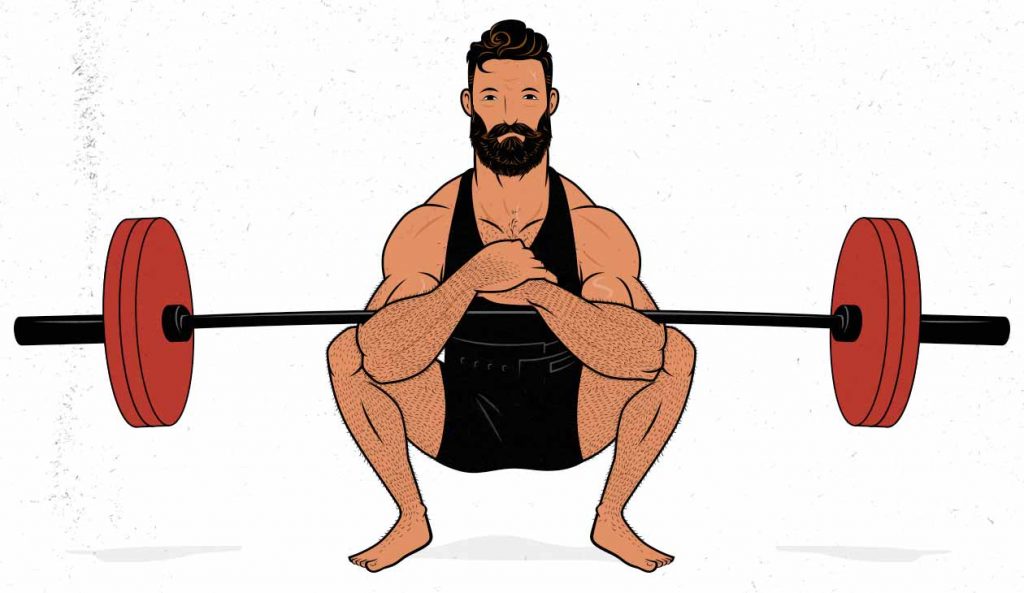
But let’s say that our main goals are to get bigger, stronger, healthier, and better looking. Even when compared against dumbbells, kettlebells, and bodyweight movements, barbells still have some worthy advantages:
- Barbells are incredibly stable and easy to use, making it less likely for the strength of our stabilizer muscles, grip, or awkwardness to limit our performance. We can focus simply on lifting heavy weights, which is great for gaining size and strength.
- Barbell lifts are heavier. Barbell lifts tend to be quite a bit heavier than their dumbbell alternatives. Someone who can bench press 225 pounds might use 90-pound dumbbells (lifting a total of 180 pounds). Our prime movers are doing just as much work, but lifting a heavier barbell puts more load on our supporting muscles, bones, and connective tissues.
- Barbells allow us to lift in lower rep ranges. Because we can pick the barbell up off a weight rack, barbells lifts are often better suited for sets of fewer than eight reps. With dumbbells, on the other hand, the strength required to clean dumbbells onto our shoulders or swing them up into a bench press position can be a limiting factor, forcing us to lift in higher rep ranges.
- Barbells can be progressively loaded heavier in small increments. By adding small 2.5-pound or even 1.25-pound plates to the sides of the barbell, we can very gradually make our lifts heavier over time. Dumbbells often go up in five-pound increments. And since dumbbell lifts are lighter, that’s often a big relative increase.
- Barbells can always be loaded heavier. With a standard strength training barbell, we can usually load up at least 700 pounds of steel plates. Even with bumper plates, we can fit up to around 600 pounds. With a dumbbell, by the time we start getting up over a hundred pounds per dumbbell, they start getting unwieldy. That means that even if we hold two dumbbells at once, we won’t ever be squatting or deadlifting more then 200 pounds.
- Barbells are incredibly efficient. When using dumbbells and kettlebells, we often need to train one limb at a time. One-arm shoulder presses, one-arm dumbbell rows, Bulgarian split squats, and split-stance Romanian deadlifts. Those are perfectly good lifts for building muscle, but it means doing twice as many sets per workout to get the same effect. Mind you, those sets are often less tiring because less weight is being lifted.
A good way of summarizing the benefits of barbell training is that we tend to gain more muscle, strength, and fitness on a per-set basis. That doesn’t mean they’re necessarily better, but it does mean they’re more efficient. That’s why so many minimalist routines are built around the big barbell lifts.
Because barbells allow us to load progressively heavier weights, and because we can safely lift in lower rep ranges, barbells are the standard piece of equipment for strength training. However, barbells are also fantastic for building muscle, and so they’re equally great for bodybuilding.
If you have the space and the budget for a barbell home gym, it’s a great choice. It’s not the only great choice, but it’s a great default. You won’t ever grow too strong for it, and so your home workouts will remain efficient and effective throughout your entire lifetime.
The Advantages of Dumbbells
One main advantage of dumbbells is that you don’t need a gym membership or spare room in order to use them. A good pair of heavy adjustable dumbbells can fit neatly in the closet of a small apartment.
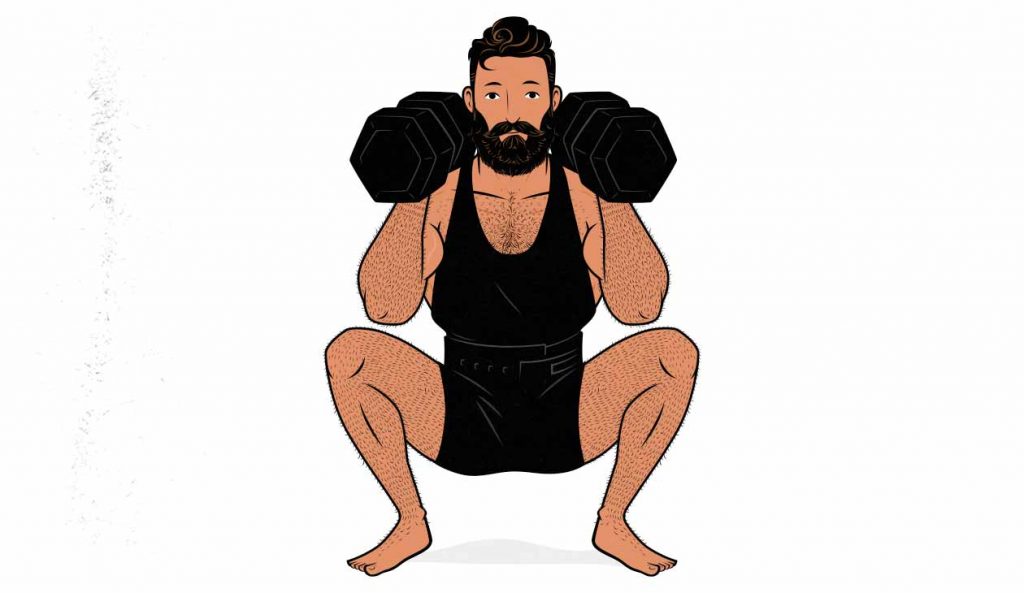
But let’s say that we have access to both dumbbells and barbells. Even then, dumbbells still have some pretty great advantages when compared against barbells:
- Dumbbells are easier on our lower backs. Because we can load one limb at a time, and because the absolute loads we’re lifting are lower, there’s never as much heavy loading on our spines. For most of us, we want to be loading our spines heavy in order to increase our bone density and to strengthen our spinal erectors. But some people have a history of injury or get a cranky lower back whenever they load their spines too heavy. In that case, dumbbells can be a great way to build muscle without aggravating our lower backs. Even for guys with healthy backs, though, this generally means that we can handle higher training volumes before feeling fatigued.
- Dumbbells are great for building the chest. When we do the bench press with dumbbells, our chests need to squeeze extra hard to bring the dumbbells together instead of just lifting them up. This makes the dumbbell bench press great for building stubborn chests.
- Our left and right sides are trained symmetrically. With a barbell, our dominant side can often help our weaker side, at least to a certain extent. With dumbbells, each side is working independently, so it’s easier to give each side the same amount of stimulation.
- Dumbbells all our hands to rotate freely while lifting. This means that we can twist our hands when doing biceps curls, overhead presses, bench presses, and everything else, making the lifts quite a bit friendlier on our joints. Dumbbells tend to produce fewer aches and pains in the wrists, elbows, and shoulders.
Dumbbells prevent us from lifting as heavy as we can with barbells, limiting both the absolute amount of weight we can lift and also the rep ranges we can use. A six-rep set of squats, bench press, or deadlifts tends to be fine with a barbell, whereas we might need to bump that up to 10+ reps if we’re using dumbbells.
But even though dumbbells don’t allow us to lift as heavy, they’re often easier on our bodies while still stimulating a comparable amount of muscle growth. The cost of that, though, is that dumbbell workouts can take longer and be more painful. After all, we often need to train one side at a time and lift in higher rep ranges.
Key Takeaways
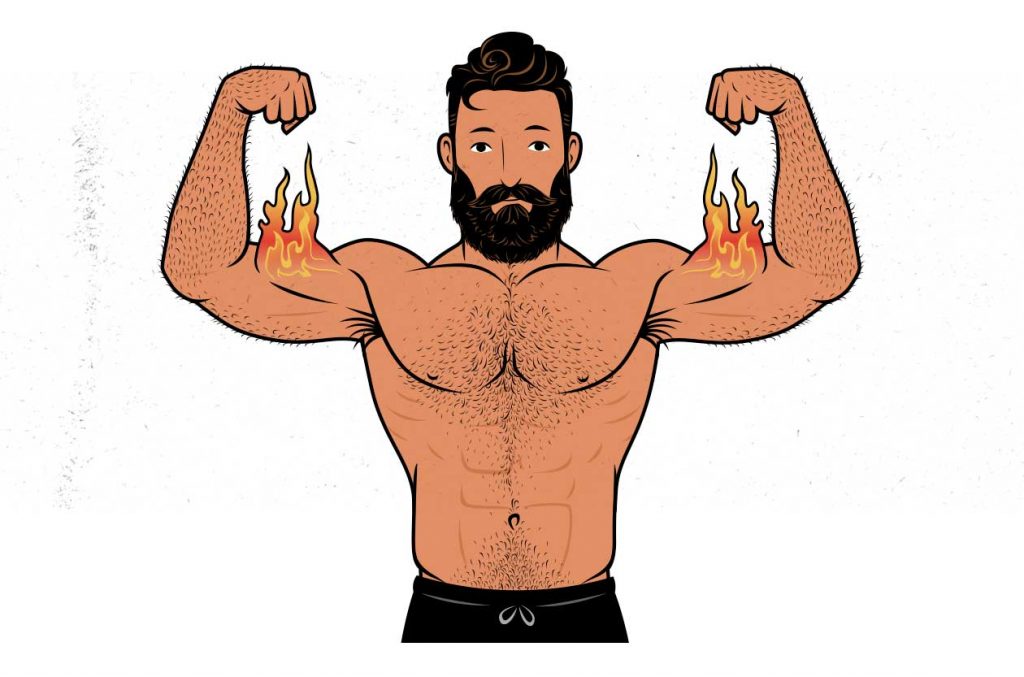
Both barbells and dumbbells are perfectly ideal for building muscle. If you have access to a barbell and the lifts feel good on your joints, they tend to be a more efficient choice, and they’re better for building strong backs and lower bodies. On the other hand, dumbbells tend to be better for our chests and some stabilizer muscles.
If you’re building a home gym and you’re picking between building a barbell or dumbbell home gym, I would default to a barbell gym if you have the space for it. That way you’ll get the advantages of barbell training and you can use the weight plates as an alternative to dumbbells (for lateral raises and whatnot).
If you live in a small house or apartment, though, if you already have aches and pains, or if you want a cheaper setup, then you’ll be able to build just as much muscle with a good pair of adjustable dumbbells. You’ll be able to gain just as much size and strength, become just as fit, look just as good.
Shane Duquette is the co-founder of Outlift, Bony to Beastly, and Bony to Bombshell. He's a certified conditioning coach with a degree in design from York University in Toronto, Canada. He's personally gained 70 pounds and has over a decade of experience helping over 10,000 skinny people bulk up.



